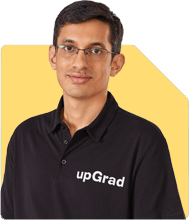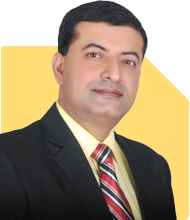Patrick Dsouza |266 Answers |Ask -Follow
CAT, XAT, CMAT, CET Expert - Answered on May 06, 2024
Along with his wife, Rochelle, he trains students for competitive management entrance exams such as the Common Admission Test, the Xavier Aptitude Test, Common Management Admission Test and the Common Entrance Test.
They also train students for group discussions and interviews.
Patrick has scored in the 100 percentile six times in CAT. He achieved the first rank in XAT twice, in CET thrice and once in the Narsee Monjee Management Aptitude Test.
Apart from coaching students for MBA exams, Patrick and Rochelle have trained aspirants from the IIMs, the Jamnalal Bajaj Institute of Management Studies and the S P Jain Institute of Management Studies and Research for campus placements.
Patrick has been a panellist on the group discussion and panel interview rounds for some of the top management colleges in Mumbai.
He has graduated in mechanical engineering from the Motilal Nehru National Institute of Technology, Allahabad. He has completed his masters in management from the Jamnalal Bajaj Institute of Management Studies, Mumbai.... more

My daughter doing mbbs internship in Karnataka. What will she do next?
You may like to see similar questions and answers below
Mayank Kumar |189 Answers |Ask -Follow
Education Expert - Answered on May 09, 2023
Mayank Chandel |498 Answers |Ask -Follow
IIT-JEE, NEET-UG, SAT, CLAT, CA, CS Exam Expert - Answered on Mar 05, 2024
Shekhar Kumar |136 Answers |Ask -Follow
Leadership, HR Expert - Answered on May 03, 2024
Vivek Lala |229 Answers |Ask -Follow
Tax, MF Expert - Answered on May 19, 2024
Vivek Lala |229 Answers |Ask -Follow
Tax, MF Expert - Answered on May 19, 2024
Vivek Lala |229 Answers |Ask -Follow
Tax, MF Expert - Answered on May 19, 2024
Vivek Lala |229 Answers |Ask -Follow
Tax, MF Expert - Answered on May 19, 2024
Ramalingam Kalirajan |2617 Answers |Ask -Follow
Mutual Funds, Financial Planning Expert - Answered on May 19, 2024
Ramalingam Kalirajan |2617 Answers |Ask -Follow
Mutual Funds, Financial Planning Expert - Answered on May 19, 2024
Ramalingam Kalirajan |2617 Answers |Ask -Follow
Mutual Funds, Financial Planning Expert - Answered on May 19, 2024
Ramalingam Kalirajan |2617 Answers |Ask -Follow
Mutual Funds, Financial Planning Expert - Answered on May 19, 2024
Ramalingam Kalirajan |2617 Answers |Ask -Follow
Mutual Funds, Financial Planning Expert - Answered on May 19, 2024
Ramalingam Kalirajan |2617 Answers |Ask -Follow
Mutual Funds, Financial Planning Expert - Answered on May 19, 2024























.jpg)

